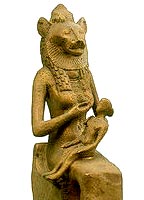
The restored face of Tutankhamun who lived for 19 years
more than 3000 years ago was unveiled to the public November 4, 85 years after
Howard Carter located his undisturbed burial site. The amazing artifacts from
tomb are testaments to the magic of the golden age of Egyptian civilization.
More amazing is the discovery of the largest and most impressive temple complex
in the world. Built by the great Egyptian Pharaoh Amenhotep, son of Thutmoses
IV, who ruled for 38 years in the 14th century B.C. at the height of peace and
prosperity, it did not withstand the earthquake of 27 B.C. and subsequent
floods, fires and scavengers.
The excavation project started in 1999 brings to light a triumph of engineering
and “the highest quality art that Egypt ever made”. Uncovered to date is a
twenty-five foot statue of Amenhotep and 72 of the 730 statues of Sekhmet, the
fearsome lion-headed goddess who guarded the gates of temples and colonnades,
one living statue for each day and night of the year. Sekhmet is the inspiring
goddess representing the awesome power of righteous anger and just retribution
in the face of injustice and ignorance.
These colossal testimonies show us that going back to the cultural and spiritual
heritage of our human history can be an enlightening encounter and that
technological progress can not be confused with human progress. Such a confusion
isolates us in the alienation of an epoch that considers that the farther we go
into the past, the less learning we can find.